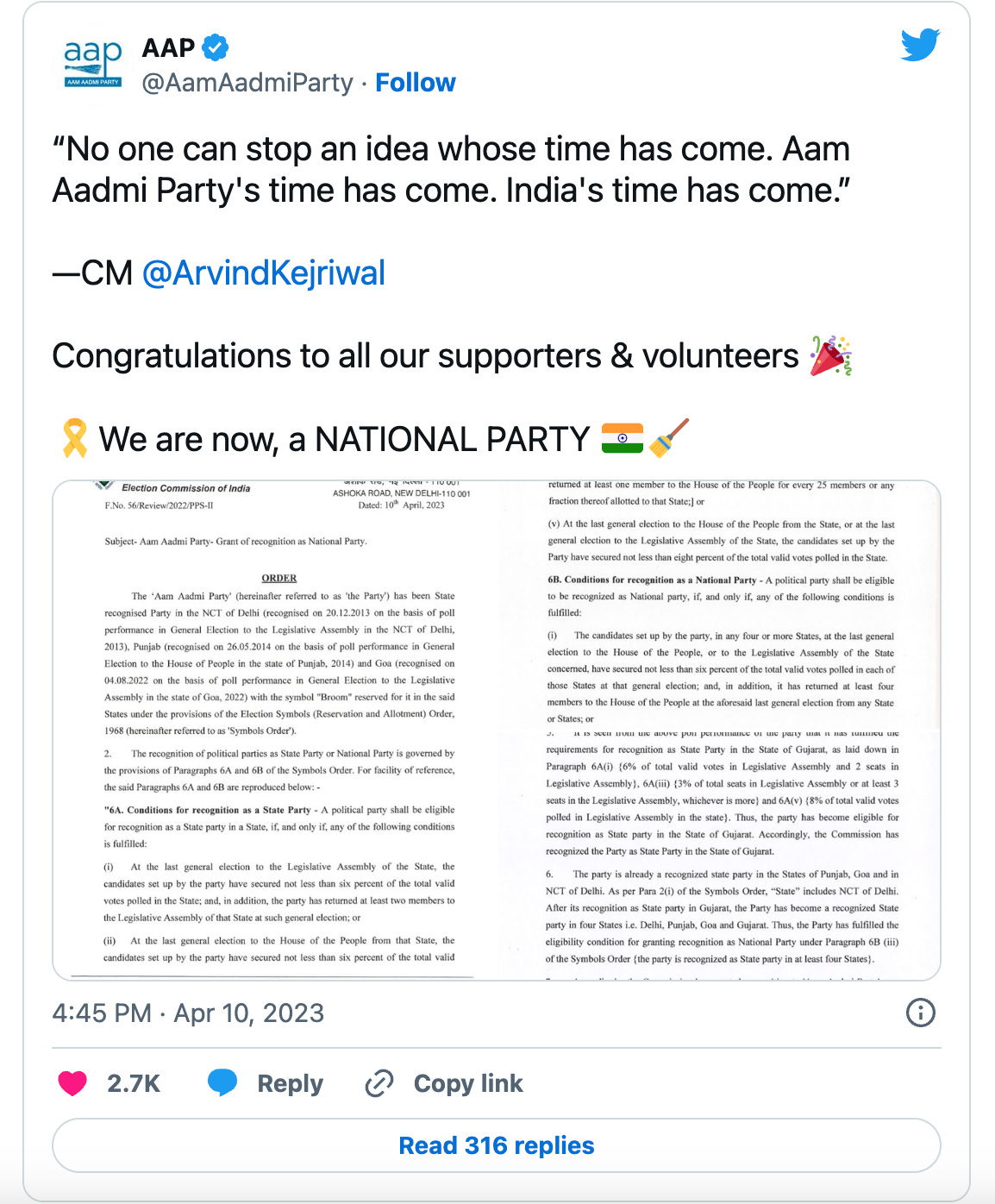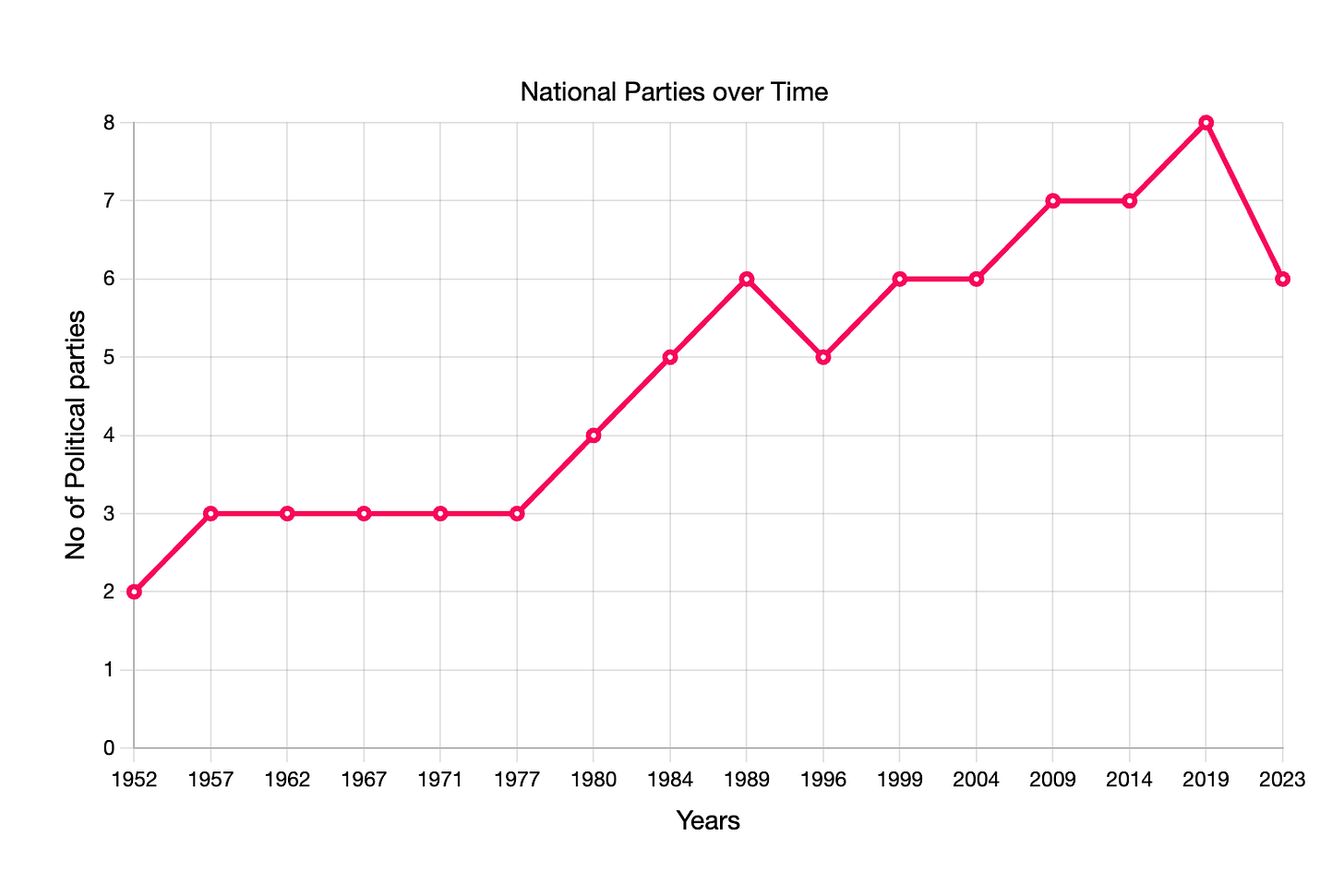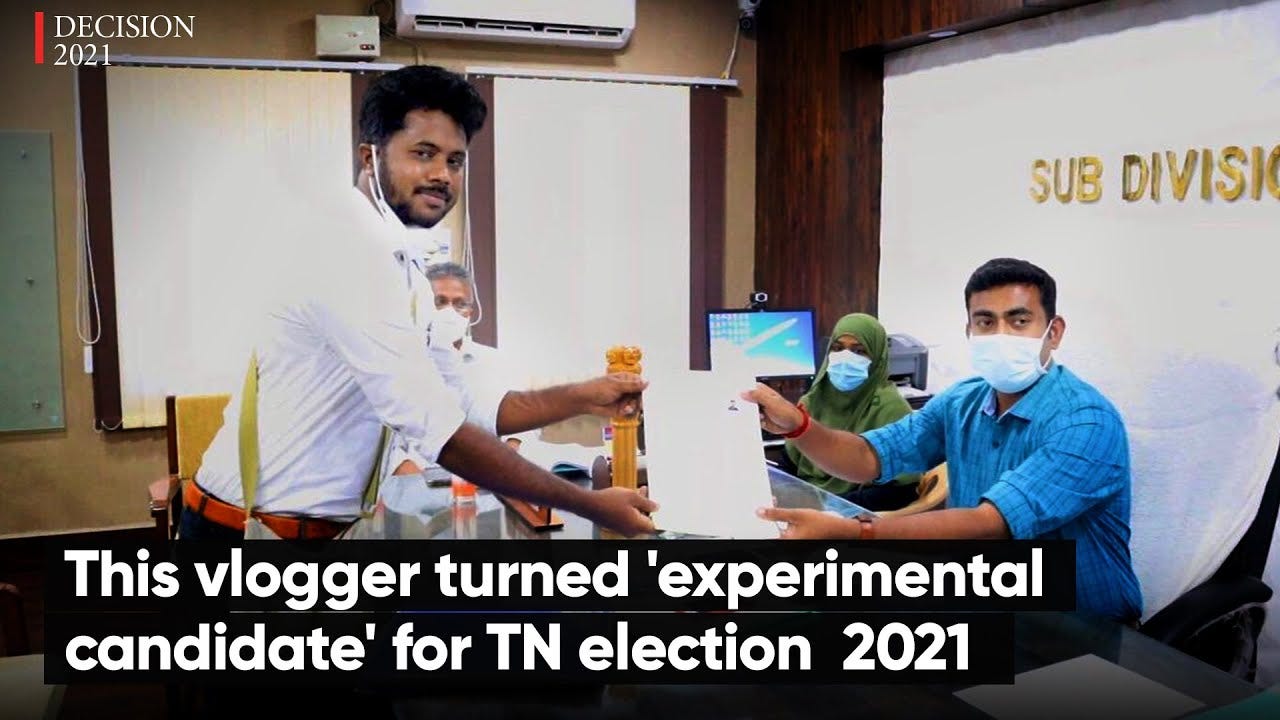National Party Eligibility Test (NPET).. ? Its not an exam
what does it takes to be a national party and its challenges and drawbacks
AAP gets national party status, TMC, NCP, and CPI lose it
The Election Commission of India (ECI) granted national party status to the Arvind Kejriwal-led Aam Aadmi Party (AAP) ahead of the upcoming Karnataka Assembly elections. Meanwhile, the Trinamool Congress (TMC), Communist Party of India (CPI), and Nationalist Congress Party (NCP) lost their national party status, and some parties lost their state party status.
‘National Party’ or ‘State Party’ …what does it takes to be one?
Registered political parties, in course of time, can get recognition as `State Party’ or National Party’ subject to the fulfillment of the conditions prescribed by the Commission in the Election Symbols (Reservation and Allotment) Order, 1968, as amended from time to time.
If a party is recognised as a State Party’, it is entitled for exclusive allotment of its reserved symbol to the candidates set up by it in the State in which it is so recognised, and if a party is recognised as a `National Party’ it is entitled for exclusive allotment of its reserved symbol to the candidates set up by it throughout India
But first, do you know the benefit of becoming a national party 💰?… right
A recognised political party enjoys privileges such as a reserved party symbol, free broadcast time on State-run television and radio, consultation in the setting of election dates, and giving input in setting electoral rules and regulations.
In addition to the benefits listed above, recognition as a national party also gives a party the ability to contest elections in all States and Union Territories in India, whereas a State party can only contest in the State or States where it is recognised. This gives national parties a significant advantage in terms of their ability to expand their reach and influence across the country.
Can someone become PM if they are not from National party … of course yes.. because its elected by the Members of Parliament (MPs) of the Lok Sabha, the lower house of the Indian Parliament
A party can get national party status if it fulfils one of the following conditions:
(a) if it is recognised as a State party in at least four States,
(b) if it secures 6% of the total votes polled in four States in the last Lok Sabha or Assembly elections, and in addition, gets four of its members elected to the Lok Sabha, or
(c) if it wins 2% of seats in the Lok Sabha from at least three States.
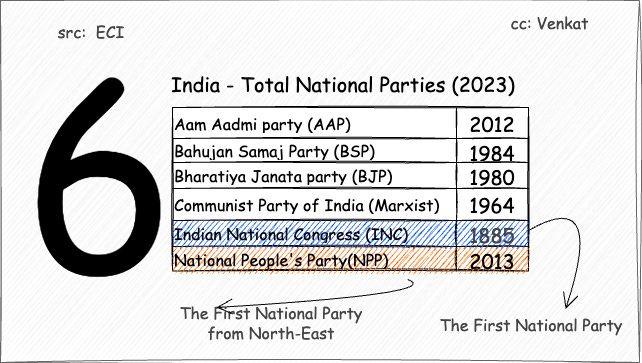
Over the years, several political parties have been recognized as national parties and subsequently lost their status. The table below shows the number of national parties in India in different years since independence, according to data from the ECI.
”Number of Political Parties (unrecognized) in India growing Faster than the Economy”
Unrecognized …hmmm what do you mean by that?
You know anyone can start a political party but without winning no one recognises your party 🧐 — unknown
Unrecognized parties are political parties that are not recognized as national or state parties by the Election Commission of India (ECI) due to not meeting certain criteria, such as not securing a minimum percentage of votes in a particular election or not having a certain number of members in the legislative assembly.
Whether our Economy grows or not but the aspiration to create a new political party in India is growing in a linear way.
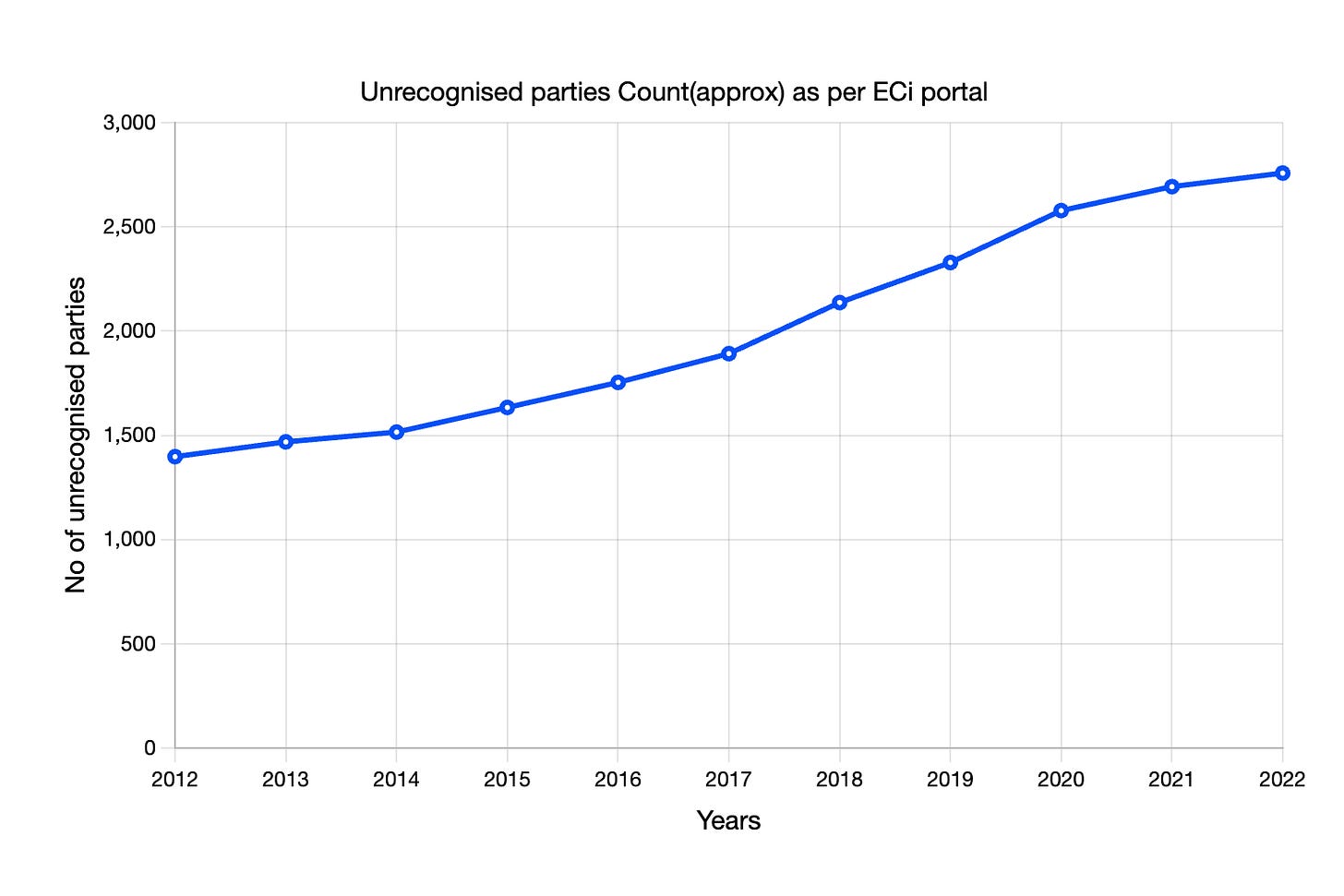
The growth of unrecognized parties in India can be attributed to a number of factors. One of the main reasons is dissatisfaction with the established political parties, which are often seen as corrupt, nepotistic, or catering only to certain sections of the population.
The rise of social media has also made it easier for smaller and lesser-known parties to gain visibility and connect with potential voters.
Additionally, regional parties, which are often focused on addressing the needs and concerns of a particular state or region, have gained popularity in recent years. Many of these parties are unrecognized at the national level, but have a strong presence in their respective states and can exert significant influence over regional politics.
Finally, the Indian political system allows for a large number of political parties to exist and contest elections. With the country's vast population and diverse demographics, there is a lot of room for niche and specialized parties to emerge and gain a foothold in the political landscape.
What are the drawbacks of it ..?
National parties in India are not necessarily representative of the diverse Indian population, as they often prfioritize the interests of certain groups over others. For example, many national parties have traditionally been dominated by one kind of groups, which has led to a neglect of the interests of other marginalised groups, such as Dalits, Muslims, and tribal communities.
Our Take!
While National parties have often been forced to form alliances with regional parties in order to gain a majority in the Lok Sabha, which has led to a fragmentation of political power and the emergence of smaller parties. This, in turn, has made it harder for national parties to maintain their dominance and has increased the role of regional parties in Indian politics which is sometime good vs bad choices.
The criteria for national party status in India have been changed several times over the years, with some critics arguing that the rules favor larger, established parties and limit the ability of smaller parties to gain national recognition.
Political parties that lose their national party status in India can learn several lessons from their experiences.
They can focus on building stronger organizational structures, rethinking their strategies, and prioritizing their strengths. They can also explore alliances with other parties and invest in their grassroots support. By undertaking these measures, parties can rebuild their strength and relevance, and regain their national party status.
Factors such as ideology, leadership, and campaign strategy play a crucial role in determining whether a political party can achieve national party status in India.
National parties need to have a clear vision and a compelling message that resonates with voters across the country. They also need strong and charismatic leaders who can inspire and mobilize supporters.
Finally, they need to have effective campaign strategies that can reach voters across the country, including in remote and rural areas. By prioritizing these factors, parties can increase their chances of achieving national party status in India.
However, losing national party status does not necessarily mean that the party will lose its state party status. A political party can continue to operate as a state party and contest elections in the states where it is recognized.
Lets see in the near future if we see a change in the rule or a new parties emerging as a national Party with these challenges…. till den….




